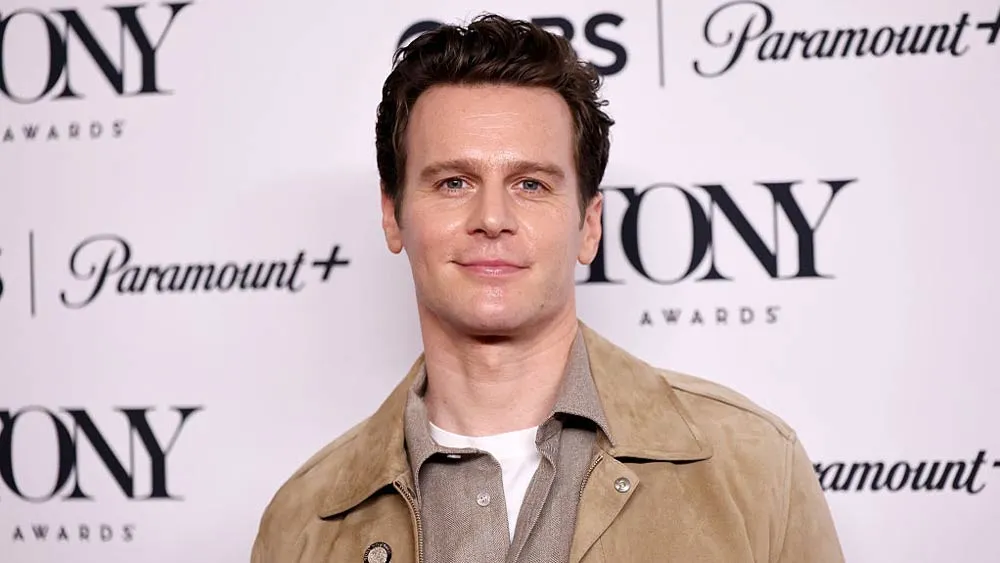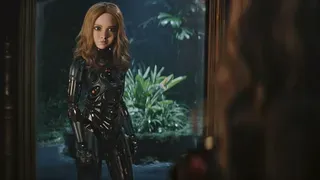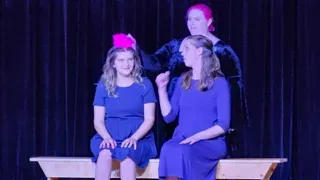March 8, 2016
Fargo - Year Two
Kilian Melloy READ TIME: 3 MIN.
If you've seen the Coen Brothers' 1996 movie "Fargo" or the first season of the FX television series based on the film, then you know the drill: A weaselly nebbish enters into a sketchy pact with a rabbity loser, and things start going sideways even before the inevitable opening notification appears on the screen: "This is a true story..."
Well, it's not a true story, of course, but "Fargo: Year Two" sometimes feels like the sort of thing that's too strange, if not too ridiculous, not to be true, if only because fiction is rarely this balls-out strange. "Fargo" is an anthology series, so the events of Season Two have nothing to do with what we saw last year, when Martin Freeman and Billy Bob Thornton bounced off each other so deliciously while a colorful cast swirled around them. But once in a while, during Season One's arc, someone would reference grisly, heinous events that took place years ago.
Season Two tells the story of those events. Set in 1979, in the Minnesota town of Luverne and in the towns of Fargo and Sioux Falls, South Dakota, the story this year folds murder, mayhem, corporate mob takeovers and old-fashioned family business in to one deletable mix... not to mention Ronald Reagan's campaign tour, outrageous violence that's simultaneously graphic and slapstick, and aliens. Yes, aliens. It's celestial mysteries above and hit-and-runs, sexual double-crosses, and gunfights galore down below.
The Coen Brothers serve as executive producers, and their aesthetic rules here in terms of story, pacing, and visuals. Long roads cut across wintry fields that stretch from horizon to horizon, the snow a blank canvas waiting only for spatters of gore. Images both comic and gruesome litter these ten episodes; if Tarantino has a love of richly discursive dialogue and Mexican standoffs and David Lynch has a talent for putting his finger on the creepy undercurrent of mundane Americana, the Coens go for stories in which multiple factions are stumbling around in the dark, glancing off one another in a narrative free-for-all. In this series, created for television by Noah Hawley, all those influences are tugging away and the result is bracing. More visual sparks fly thanks to the grindhouse aesthetic of the the show's editing, with lots of split-screen effects and jump cuts, together with occasional dramatic freeze-frames.
The characters are, as usual, a perfect blend of Minnesota politeness and thug-ugly nastiness. The main character, if there is one, is probably Lou Solverson (Patrick Wilson), the only intelligent guy in the bunch. He's a street-smart state trooper who's drawn into a war between a gang of killers from Kansas City and a South Dakota crime family whose patriarch, Otto Gerhardt (Michael Hogan), has been left paralyzed after a stroke. The Kansas City slickers might think this means a power vacuum and easy pickings, but they haven't reckoned on Otto's tough wife, Floyd (Jean Smart), nor his trio of aggressive, and rather dim, sons: Dodd (Jeffrey Donovan), Bear (Angus Sampson), and Rye (Kieran Culkin).
But the Gerhardt clan is only the beginning: In a milieu where people are both commodity and complication, all it takes is one or two chance encounters to derail even the most meticulously laid plans. Enter Ed (Jesse Plemons), a dangerously dumb butcher, his ditzy, empowerment-obsessed wife Peggy (Kirsten Dunst), and a charismatic villain named Mike Milligan (Bokeem Woodbine), a walking library of highbrow quotes who is forever flanked by a pair of mercilessly effective twin thugs.
Watching such colorful characters move in straight lines would be compelling; watching them careen around, leaving a scarlet path of destruction in their wake, is dizzying entertainment, but it's also a rarefied literary exercise. Especially entertaining is hard-drinking, conspiracy theory-addled lawyer Karl (Nick Offerman), playing a role that seems like it was written for John Goodman and making it his own.
The extras are just as loopy, but next to these ten episodes they seem like curios. They do give the episodes a little more shading and context, but they don't need to contribute to the story. They're extras in the sense that they don't really add (or detract); they're bonus content that prolongs the fun.
Extras:
"Fargo - Year Two"
Blu-ray
$49.99
http://shop.fxnetworks.com/fargo-season-2-dvd/detail.php?p=961550
Kilian Melloy serves as EDGE Media Network's Associate Arts Editor and Staff Contributor. His professional memberships include the National Lesbian & Gay Journalists Association, the Boston Online Film Critics Association, The Gay and Lesbian Entertainment Critics Association, and the Boston Theater Critics Association's Elliot Norton Awards Committee.





